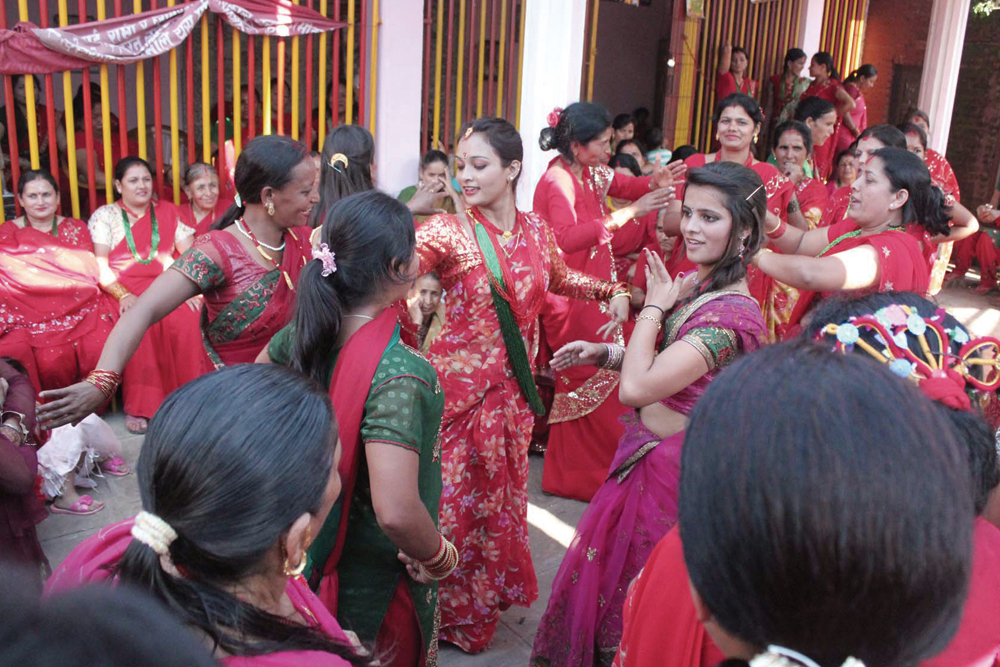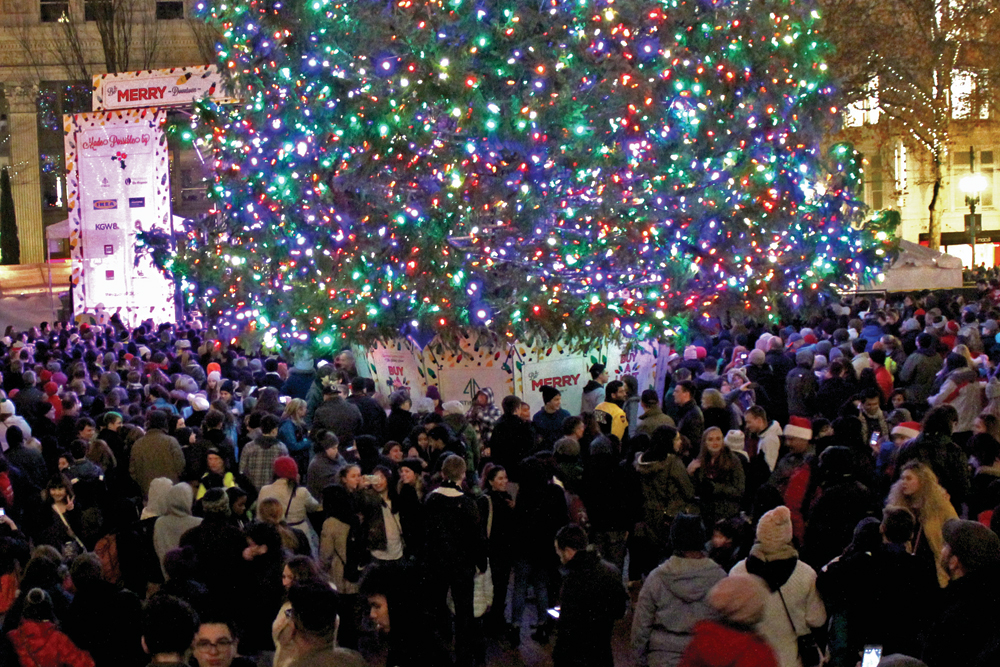Rusma Manandhar is an international student from Kathmandu, Nepal, the home of Mount Everest and the birthplace of Buddha, who came to Portland State to study financing. When she joined me for an interview about Nepali holiday traditions, her face lit up with high-spirited excitement.
For those who are only familiar with lit candles and jingling bells during the winter holidays, it may be hard to imagine how Nepal enjoys the winter festivities. “Nepal celebrates the new year in similar but different ways,” Manandhar said.
Having lived in the United States for three years, Manandhar recalled memories of her first winter celebration here. She wasn’t too astonished; she had already experienced the American form of winter holidays in Nepal.
“Nepal is a very small country whose economy relies heavily on tourism,” Manandhar said. As a result, Nepal’s holiday traditions are an amalgamation of diverse cultures and traditions. Manandhar already had a taste of the American-style winter festivities—holiday parties, presents being exchanged and brightly decorated streets.
Although Nepal follows the global calendar standard, it counts time according to its own unique calendar system. “In fact, it is now year 2072 in Nepal,” Manandhar said, laughing. “We still celebrate the new year on January 1st, but it isn’t actually the first day of a new year for us.” When asked if there was a day of celebration similar to Christmas, she referred to the Teej festival.
“Teej is my favorite,” Manandhar said, excited. The Teej festival is of great significance for Nepali women in particular. It is a festival that celebrates the union of Lord Shiva and Goddess Parvati in Hinduism, which is the dominant religion in Nepal. There are three days of celebration full of feasts and fasting. Women adorn themselves with gold jewelry and bright-colored saris, which are traditional garments in Nepal, India and many other South Asian cultures.
Manandhar shared her plans to wear a red sari in the next Teej festival. Traditionally, the red sari is only worn by married women.
“I love that I can wear a red sari nowadays,” Manandhar said. She found it very special to wear this color and show off her beautiful sari in the last Teej festival, organized by the Nepalese Association in Oregon. “It’s sad that we can’t celebrate Teej for all three days,” Manandhar said. “Still, we enjoy dancing, light decorations and delicious Nepali food.”
This winter holiday, Manandhar’s family was unable to join her in the United States. She is still grateful for the Nepali spirits and traditions upheld by organizations in Portland, including the Nepalese Association on campus. Here, she is able to feel a taste of home during the festival season. She also looks forward to her graduation in 2016, when she will finally be reunited with her family.
During Teej, women pray for the health and longevity of their husbands, their marriage and beauty. This year, Manandhar wants to pray for one more thing: “Nepal went through a devastating crisis this year. It is still lacking supply of food and resources.” She hopes that, in the future, Nepal will be self-sufficient to meet the needs of its people.





